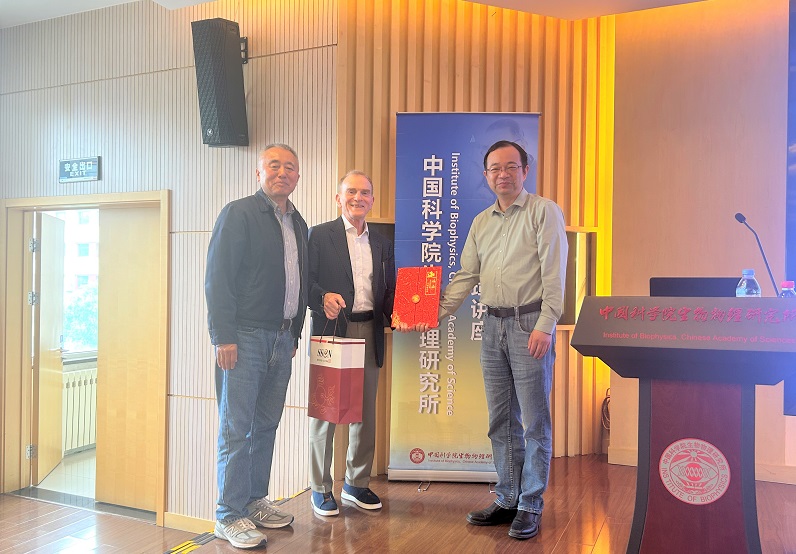Professor Randy Schekman visited the Institute of Biophysics (IBP) and gave a Bei Shizhang Lecture
Professor Randy Schekman, recipient of the 2013 Nobel Prize in Physiology or Medicine, member of the U.S. National Academy of Sciences, visited IBP and gave a Beishizhang Lecture entitled Unconventional Secretion: Extracellular Vesicles and Soluble Proteins on May 21, 2025. The lecture was hosted by Professor Pingsheng Liu.
Professor Randy Schekman is currently a Professor in the Department of Molecular and Cell Biology at the University of California, Berkeley. He has long been dedicated to uncovering the molecular mechanisms of intracellular protein transport. His team was the first to identify key genes involved in vesicular transport in yeast, elucidating the role of COPII proteins and laying the foundation for modern studies of the secretory pathway. For his outstanding contributions to the field of vesicular trafficking, Professor Schekman shared the 2013 Nobel Prize with James Rothman and Thomas Südhof. In recent years, his research has focused on unconventional secretion mechanisms involving extracellular vesicles (EVs) and neurodegenerative disease-related proteins, expanding both the depth and clinical relevance of his work.
In this seminar, Professor Schekman presented his team's latest findings on unconventional secretion. First, he introduced Annexin A6 and Copine 3 as key calcium-dependent regulatory factors involved in the membrane association and vesicle release of proteins such as α-synuclein. In cellular experiments, inhibition of these two proteins significantly reduced α-synuclein secretion. This calcium-dependent mechanism is not only essential for the export of toxic proteins but may also play dual roles in membrane repair and stress response
Next, Professor Schekman elaborated on another unconventional secretion pathway for α-synuclein, involving DNAJC5 and SCAMPs. Their research demonstrated that DNAJC5, a vesicle-associated chaperone, facilitates the secretion of α-synuclein through pathways independent of the classical ER-Golgi route, such as via extracellular vesicles. SCAMPs, as membrane proteins of secretory carriers, showed protective roles in the transport and clearance of toxic proteins; their loss in Drosophila models exacerbated α-synuclein aggregation and neurotoxicity, leading to motor impairments.
Following the lecture, Professor Schekman engaged in in-depth discussions with faculty and students on topics including the mechanisms of unconventional secretion, the biological functions of exosomes, and disease modeling. Attendees praised the seminar as both accessible and cutting-edge, highlighting the close integration between cell biology and neurodegenerative disease research. The event concluded amid lively discussion and enthusiasm for future scientific collaboration.

Prof. Randy Schekman and Prof. Liu and Zhu

The audience

